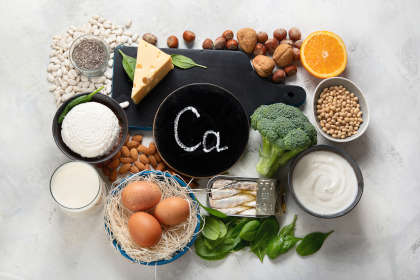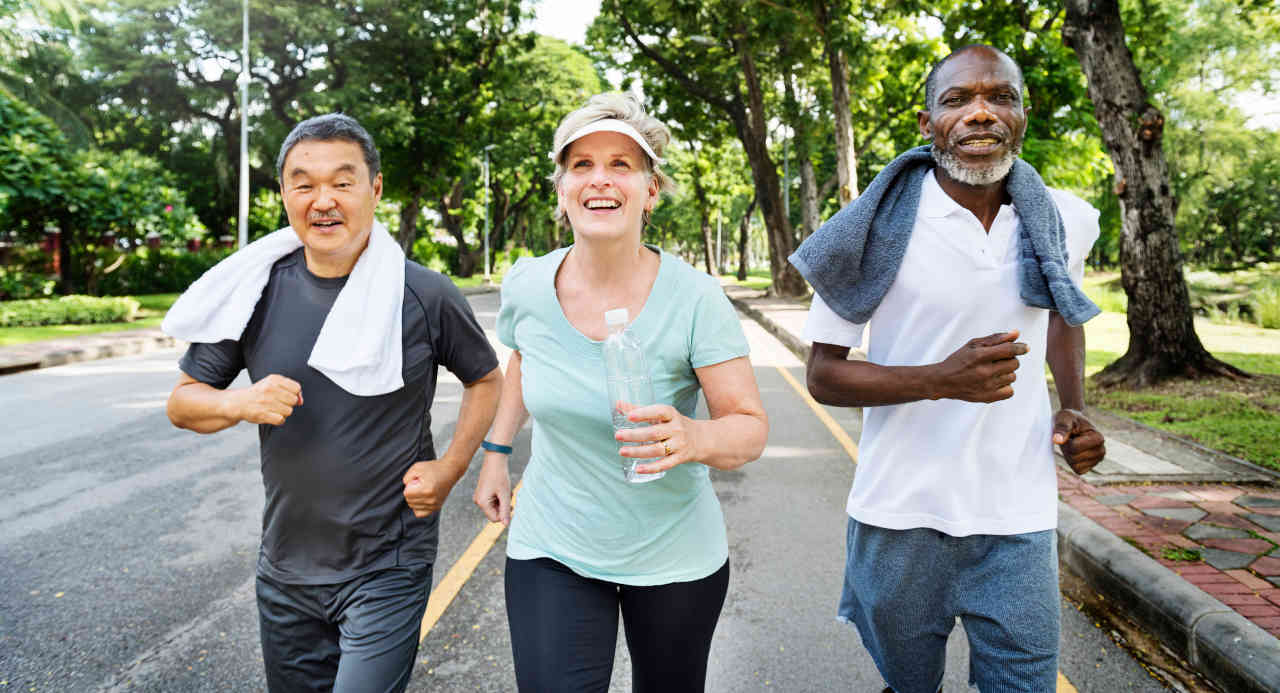As we age, our bones naturally become less dense and strong. Since our bones play a crucial role in providing support and structure to our bodies, it’s important to take care of our bone health to prevent a common health issue called osteoporosis in our later years.
Get Your Pills Pre-sorted and Delivered at No Extra Cost
Osteoporosis is a condition where our bones become fragile and more prone to breaking, even with a minor fall or accident. This condition can greatly impact our independence and overall quality of life as we get older.
Research has shown that women, especially after menopause, can lose up to 20% of their bone density, putting them at a higher risk of osteoporosis as compared to men. Therefore, maintaining strong and healthy bones becomes increasingly important as we age.
Below, we’ve outlined some natural and effective strategies that you can incorporate into your daily routine to help keep your bones strong and reduce the risk of fractures or falls as you enjoy your golden years.
Effective Strategies for Maintaining Strong Bones
Fulfill Your Daily Calcium Quota

Calcium is your bone’s best friend and is necessary for building and maintaining strong bones. 99% of the calcium you consume from your diet is stored in your bones, and the remaining 1% is in muscle, blood, and other tissues.
During the process of bone formation, calcium, along with other minerals, is incorporated into the bones to give your bones density and make them stronger. Conversely, calcium deficiency in your body causes your bones to lose density gradually, becoming more prone to fractures.
Hence, intake of adequate amounts of calcium is important to maintain bone health. You can fulfill your daily calcium requirement in two ways:
- By eating calcium-rich foods, which include dairy products (e.g., yogurt, tofu milk, and cheese), vegetables (such as kale, broccoli, and Chinese cabbage), fish (salmon), and nuts (almonds)
- By taking calcium supplements
Though the exact daily need for calcium depends on your age, sex, and other factors, the recommended daily calcium requirement for adults under 50 years is 1,000 mg, and for adults aged 50 or above, the recommended amount is 1,200 mg. The recommended upper limit of calcium is 2,500 mg/day for adults aged 18 – 50 and 2,000 mg/day for those over age 50. Supplementation is particularly important in certain older patients at higher risk of calcium deficiency, including those who follow a vegan diet, have lactose intolerance, or have a history of bowel disease that can impair calcium absorption, such as inflammatory bowel disease.
Boost Vitamin D Intake
Like calcium, Vitamin D is also essential for maintaining good bone health. Vitamin D helps your body absorb calcium, and without adequate vitamin D, your body can only absorb 10-15% of calcium, even if you consume plenty of calcium.
When you have insufficient vitamin D, your body starts removing calcium from your bones, causing the weakening of bones and, ultimately, bone loss.
The biggest and most natural way to boost your vitamin D levels is to get sun exposure. When UV rays from the sun strike your skin, they trigger vitamin D production in your body.
Other vitamin D-rich sources are mushrooms, orange juice, eggs, beef liver, fish (such as trout, salmon, mackerel, and tuna), shrimp, cheese, butter, fortified milk, and cereal. Taking supplements is an option if you don’t think you will get sufficient vitamin D from foods and sun exposure.
Ideally, you should get 600-800 IUs of vitamin D daily if you’re 50 years or above. While vitamin D supplementation is generally safe, excessive supplementation can lead to constipation, nausea, or risk of kidney stones.
No More Pill Sorting! Our Pharmacy Pre-sorts and Packages Your Pills
Engage in Physical Activity Regularly
Regular physical activity is beneficial for your bone health. Exercise, especially weight-bearing (e.g., walking, jogging, hiking, or climbing stairs) and resistance exercise (e.g., push-ups or weight lifting), not only helps in muscle building but is also particularly helpful for maintaining strong bones.
Exercising daily for at least 30 minutes can strengthen your bones and slow down the progression of bone loss as you age. A study showed that regular exercise increased bone density in older adults and reduced the risk of falls and fractures. It is never too late to start exercising.
Quit Tobacco Products and Reduce Alcohol Consumption
Excessive consumption of tobacco or alcohol detrimentally affects bone health. For example, smoking and drinking too much alcohol not only affects your lungs and liver but also affects your bone health. Both factors interfere with the ability of bone cells called osteoblasts to form new bones and cause the weakening of existing bones. Osteoblasts are a type of cell involved in the bone cell production and healing of existing bones.
If you’re smoking and consuming alcohol regularly, it may reduce bone density and speed up bone loss as you age. Therefore, smoking cessation and limiting excessive alcohol intake are recommended for better bone health in later life.
Add Enough Protein to Your Plate
Protein not only increases muscle mass but also keeps your bones healthy and strong. In fact, 50% of your bone is made of protein. Research suggests that women, particularly postmenopausal women, appear to have better bone density when they consume more protein.
Hence, eating more protein-rich foods such as dairy, eggs, white meat poultry, lentils, lean beef, shrimp, and soy can help to maintain strong bones as you age.
Screen Your Bone Mineral Density
Since your bone mass tends to decrease with age, it is important to check your bone mineral density. The bone mineral density (BMD) test helps determine the density of bone by measuring the level of calcium and other minerals in bone. For instance, bone containing more minerals is denser, stronger, and less likely to break.
Conversely, if BMD is low, your bones have lost too many minerals (density) and are not strong enough to resist pressure. This puts you at increased risk for fractures. Talk to your doctor about whether you may benefit from getting a bone density test.
MedBox: Never Sort Medications Again
REFERENCES:
- Padilla Colón, C. J., Molina-Vicenty, I. L., Frontera-Rodríguez, M., García-Ferré, A., Rivera, B. P., Cintrón-Vélez, G., & Frontera-Rodríguez, S. (2018). Muscle and Bone Mass Loss in the Elderly Population: Advances in diagnosis and treatment. Journal of Biomedicine (Sydney, NSW), 3, 40. https://doi.org/10.7150/jbm.23390
- Khazai, N., Judd, S. E., & Tangpricha, V. (2008). Calcium and Vitamin D: Skeletal and Extraskeletal Health. Current Rheumatology Reports, 10(2), 110. https://doi.org/10.1007/s11926-008-0020-y
- Gillespie, L. D., Robertson, M. C., Gillespie, W. J., Sherrington, C., Gates, S., Clemson, L., & Lamb, S. E. (2012). Interventions for preventing falls in older people living in the community. Cochrane Database of Systematic Reviews, (9). https://doi.org/10.1002/14651858.CD007146.pub3
- Beasley, J. M., LaCroix, A. Z., Larson, J. C., Huang, Y., Neuhouser, M. L., Tinker, L. F., … & Prentice, R. L. (2014). Biomarker-calibrated protein intake and bone health in the Women’s Health Initiative clinical trials and observational study. The American Journal of Clinical Nutrition, 99(4), 934-940.
- Ebeling, P., Daly, R., Kerr, D., & Kimlin, M. (2013). Building healthy bones throughout life: an evidence-informed strategy to prevent osteoporosis in Australia. Medical Journal of Australia, 2(S1), 1-9.
- Rudrapal, M., & Chetia, D. (2017). Calcium and vitamin D through diet for healthy bones. Everymans Sci, 52, 190-5.


